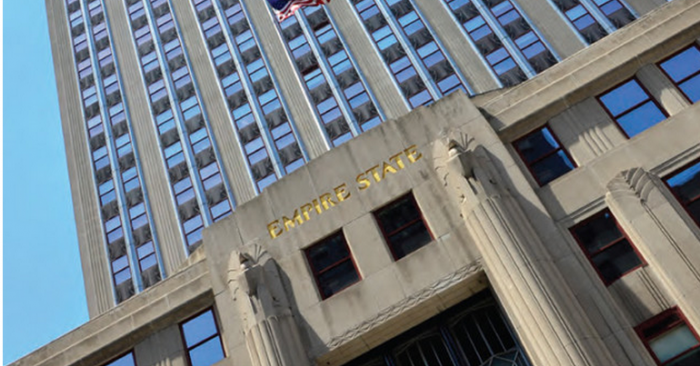Jordan Cohen, ERS, for Zondits
New York City residents are largely unaware that energy benchmarking data on the city’s largest buildings is readily available online for public viewing. An update to an existing law may soon require these buildings to publish their energy efficiency scores in a more transparent manner, however. If the bill passes, New Yorkers could see energy efficiency letter grades on the outside of buildings and in real estate advertisements. This approach may encourage buildings to pursue energy efficiency improvements to better their scores and appeal more to prospective buyers and renters, which may in turn command higher prices. However, some landlords in New York are fighting this movement in fear of how a low score will affect their buildings, especially those that house energy-intensive tenants. While New York would be the first American city to require this transparency, this approach has already been established and proven effective in areas of Europe.
New York City Should Grade Buildings on Energy Efficiency
New York Times, June 5, 2017
As President Trump retreats from his predecessor’s efforts to tackle climate change, it is more important than ever that our cities and states develop tools to reduce the greenhouse gas emissions responsible for the planet’s warming. In New York City, this means first and foremost cutting energy use in buildings, which accounts for over two-thirds of the city’s emissions.
A simple tweak to an existing law could help the city reach its goal of reducing greenhouse gas emissions by 80 percent by 2050 and create a template for the rest of the country to follow. Local Law 84, enacted in 2009, obligates the city’s largest buildings to report how much energy they consume each year. Participating buildings then receive scores indicating how efficient (or inefficient) they are compared to similar buildings.
But almost no one sees the data. The ratings are posted on a government website that few people know about and are charted on a 100-point scale that is difficult to interpret. Seven years into the program, even many experienced real estate brokers are unaware the data exists.
That would change under legislation awaiting action in City Council. The measure would require buildings to publish their energy efficiency ratings more effectively, a step that has improved energy efficiency elsewhere. Unfortunately, the bill has been languishing in the Council for months, even though energy disclosure laws like Local Law 84 rely on transparency to work.
If buyers and renters value energy efficiency, or at least the savings on utility bills that come with it, improving the disclosure of energy-performance information should help increase demand for high scoring properties and encourage investments and upgrades in others. But this approach breaks down when the information is not effectively disseminated.
So how can New York City do a better job of communicating the energy benchmarking scores?
A policy in place throughout the European Union offers a guide. New York should translate the current numerical scores into a more intuitive letter grading system and require that the grades be included in real estate advertisements. Building owners should also be required to post their grades on site, just as restaurants must post their health grades.
New York would be the first American city to require such broad publication.
Under this approach, buildings with modern heating systems, tightly sealed windows, and lights that dim as the sun peaks would receive an A, and would display the grade in plain sight. Buildings that have resisted energy upgrades would receive a failing mark and would also have to display their poor grades for all prospective buyers and renters to see.
The European experience suggests that this approach could lead to efficiency improvements. In 2010, the European Union amended its building energy disclosure law to require that all advertisements offering properties for sale or rent include an energy performance grade. The amendments also increased the number of buildings required to display their efficiency grades on-site.
Since that law was enacted, studies of various property markets in the union have found that buildings with higher energy grades command price premiums. In Denmark, for instance, properties with high grades have sold for an average of 10.1 percent more than low-rated properties. For Danish consumers, viewing energy grades early in their search for a new home seems to have made a big difference.
The idea that a building or advertisement for a building should be required to display energy information is far from revolutionary. The federal government requires that advertisements for appliances include Energy Star ratings, and cars in showrooms display stickers with their miles-per-gallon performance. And New York City, of course, obliges restaurants to display their health grades in a window even though it also posts the information online. Why should something as important as the energy benchmarking data be treated differently?
